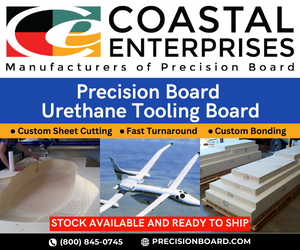State of the Composites Industry
Do you have your own assessment of the state of the composites industry? If so, let me know at jeff@compositesworld.com. And have a great 2018.
It’s December, a time for taking stock of the year that was, and for contemplating what the year ahead might have in store. Let’s call it the State of the Composites Industry.
It is difficult to look about the world of composites today and not feel generally positive about the state of the industry. The composites-intensive Boeing 787 and Airbus A350 XWB are in full production and flying. The Boeing 777X, with massive carbon fiber composite wings, just started production and is expected to fly for the first time in 2019. The automotive industry is consuming composites like never before, with real plans for high-volume manufacturing. The recreational marine industry, which was so injured by the Great Recession, is on the mend and posting sales numbers not seen in a decade. The wind energy industry can’t build composite turbine blades fast enough, and even the oil and gas segment is starting to put composites to greater use than ever. And in building and construction, we are seeing composites being embraced anew and applied in everything from structural building façades to elevator cables.
In materials and processes, the fast pace of innovation and creativity has stimulated new resin chemistries, new fiber sizings, new automation options, better preforming technologies, faster manufacturing processes, better process control, better quality control and better overall part quality. However, as with any good manufacturing environment, it is necessary to look for opportunities to improve and build efficiencies. So, as we enter 2018, what are our opportunities? Where can we improve and grow? Here’s my two cents.
Accessibility. Robust, sustainable composites industry growth demands easy accessibility for designers and engineers from outside the composites industry. Right now, we don’t have that. If you are an engineer used to working with metals or even unreinforced polymers, penetrating, entering and then comprehending the world of composites design and manufacturing is daunting. The complexities of myriad material types, tooling types and processing methods can pose a substantial barrier to entry and thus limits wider composites adoption. Improving accessibility requires education and at least some level of M&P standardization. Standardization, however, requires cooperation and planning on the part of people and organizations from throughout the composites supply chain. Such cooperation is happening, but, frankly, it cannot happen fast enough.
Automation. The composites industry grew up with the tradition of touch labor — people cutting fabric, placing plies, spraying chop, bagging molds, visually inspecting, trimming finished parts. With this came a certain amount of black art, and inconsistency. But as composites play on bigger stages (commercial aerospace, automotive), their manufacture must adhere to more stringent rules: Increased throughput, better process control, inline quality control. This means the human hand must go. There must be investment in robotics, automation systems and software to bring new levels of production discipline and efficiency. Capital equipment (and the associated expense), however, has never been this industry’s strong point. We will have to make it a strong point soon.
Alternative materials/processes. This is an opportunity. Thermoplastic resins, additive manufacturing and non-PAN carbon fiber precursors are well positioned to trigger substantial change within our industry. Thermoplastics, although not new, have already proven themselves viable in aerospace and automotive structures, and that trend will accelerate. Very large, and getting larger, additive manufacturing systems are already reshaping (literally) how we make molds and tooling. Carbon fiber’s big opportunity for growth is in nonaerospace applications. Several companies, not to mention government labs, are working on soon-to-be commercialized, low-cost precursors for nonaerospace carbon fiber that will likely facilitate expanded use of this material.
Do you have your own assessment of the state of the composites industry? If so, let me know at jeff@compositesworld.com. And have a great 2018.
Related Content
ASCEND program update: Designing next-gen, high-rate auto and aerospace composites
GKN Aerospace, McLaren Automotive and U.K.-based partners share goals and progress aiming at high-rate, Industry 4.0-enabled, sustainable materials and processes.
Read MorePlant tour: Albany Engineered Composites, Rochester, N.H., U.S.
Efficient, high-quality, well-controlled composites manufacturing at volume is the mantra for this 3D weaving specialist.
Read MorePEEK vs. PEKK vs. PAEK and continuous compression molding
Suppliers of thermoplastics and carbon fiber chime in regarding PEEK vs. PEKK, and now PAEK, as well as in-situ consolidation — the supply chain for thermoplastic tape composites continues to evolve.
Read MoreCryo-compressed hydrogen, the best solution for storage and refueling stations?
Cryomotive’s CRYOGAS solution claims the highest storage density, lowest refueling cost and widest operating range without H2 losses while using one-fifth the carbon fiber required in compressed gas tanks.
Read MoreRead Next
All-recycled, needle-punched nonwoven CFRP slashes carbon footprint of Formula 2 seat
Dallara and Tenowo collaborate to produce a race-ready Formula 2 seat using recycled carbon fiber, reducing CO2 emissions by 97.5% compared to virgin materials.
Read More“Structured air” TPS safeguards composite structures
Powered by an 85% air/15% pure polyimide aerogel, Blueshift’s novel material system protects structures during transient thermal events from -200°C to beyond 2400°C for rockets, battery boxes and more.
Read MorePlant tour: Daher Shap’in TechCenter and composites production plant, Saint-Aignan-de-Grandlieu, France
Co-located R&D and production advance OOA thermosets, thermoplastics, welding, recycling and digital technologies for faster processing and certification of lighter, more sustainable composites.
Read More





















